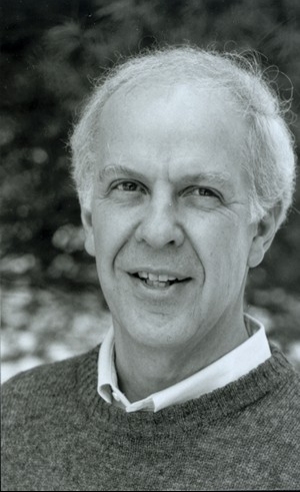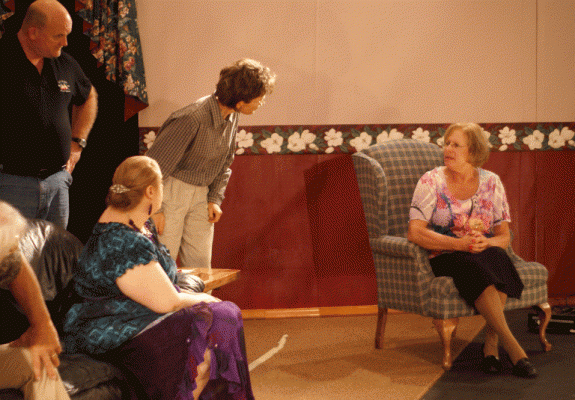
About a year ago, I walked into my classroom and found my students chatting away. This particular class had the main door at the back, with the students facing away, so they often wouldn’t see me enter or know I was present until I was already in. Some near the front wouldn’t know I was present until I nearly reached the front of the room. Thus I could often get insights into their thinking by just entering slowly enough to avoid drawing attention.
That day, one student, Neil (not his real name), a former soldier with habit of comparing me to a drill instructor, said: “I feel like I’m not really as smart as people think, that I’m just spinning a line of bullshit.” At that moment he saw me enter and fell silent, but several around him nodded and voiced vague agreement before they noticed my presence.
As eighteen pairs of eyes turned to regard me, I asked, “Why did you go silent?”
“Well, I... I don’t know.”
“Is there something shameful,” I asked, “about spinning a line of bull?”
Neil shrugged, in that oversized, two-palms manner that the young often have. “It just seems, I don’t know, dishonest. Like I’m pretending I know something when I reallly don’t.”
“Well then, let me turn it around. What do you do when you spin a line of bull?”
“I just kind of pull a little bit from over here, and a little bit from over here, and run them together in a way that sounds smart.”
“So you’re combining separate pieces of information to create something new?”
“I guess so.”

“And,” I said, feeling I’d made the triumphant stroke, “how is that not an act of intellectual accomplishment?”
Silence reigned.
“I put it to you,” I said to the class, “that spinning a line of bullshit is the most important skill you will ever pick up in your academic career. That’s all any of us ever do, stringing together disparate pieces of knowledge and synthesizing something new. Mixing two pieces of information to create something where the whole exceeds the sum of its parts—well, that’s the only way anybody ever made any progress on anything.”
Neil offered that oversized shrug again. “But so much of what I come up with gets shot down when we have the class discussion.”
“And?”
“And doesn’t that mean I’ve failed in the process?”
“You created an idea, put it to the test, and found it didn’t work. What’s wrong with that?”
“Don’t we come up with ideas in the hopes of them surviving?”
“Yes, we do. But remember the old story about Thomas Edison, who attempted over two thousand options trying to find a useful filament for his light bulb. A lab assistant said that they had failed over two thousand times. Edison said they had not; they had definitively proven that two thousand false options would not work.”
Nathan in the other corner put his hand up then. (How many times did I have to tell them that, in college, they don’t need permission to speak up in an open discussion?) “Are you saying that failure is good, then?”
“Yes, I am.”
“But it’s...” Nathan waved his hands around, fumbling for words. “It’s failure!”
“Yes, it is. But you have to abolish the idea of ‘failure’ as more than just ‘not success.’ Thomas Watson, the guy who made IBM into a business juggernaut, said: ‘If you want to succeed more, increase your failure rate.’ Failure means you tried something. It means you took a risk. Failure means you’re still alive, still thinking, and one step closer to achieving your goals.”
“So,” Neil asked, “you want us to fail more?”

“I want you to risk more. And that may mean failing more. Employers favor college-educated job candidates because you have the skill to, as you put it, spin a line of bullshit. You have the breadth of knowledge necessary to step beyond the safe and known, take risks, and jump to the next level.”
Dani, who had the habit of sitting quietly until she had something concrete to say, leaned forward at this point. “You’re spinning a line of bullshit right now, aren’t you?”
“Of course. Do you really think I came in here this afternoon expecting to have this discussion?”
“I suppose not.”
“I’ve been spinning since the moment I came in. Let me ask you, do you like what you’ve heard so far?”
Dani nodded.
“Then let’s get on to today’s planned discussion.”
And we never had a better discussion all semester.





 Setting components on the assembly line looks easy until you do it. When the machine runs at a standard forty-five units per minute, rest assured, on your first day, you will fail to keep up. Even after months on the job, minor setbacks can knock me off the production line. You run the machine, but the machine can easily wind up running you.
Setting components on the assembly line looks easy until you do it. When the machine runs at a standard forty-five units per minute, rest assured, on your first day, you will fail to keep up. Even after months on the job, minor setbacks can knock me off the production line. You run the machine, but the machine can easily wind up running you. Some management theories contend that laborers should work with machine-like ferocity. Yet when machines run continuously for shift after shift, they break. When the metal gets strained, joints overheat, or the governing computer can’t manage the demands, the machines go ping and stop running. I’ve seen laborers do the psychological equivalent on the factory floor.
Some management theories contend that laborers should work with machine-like ferocity. Yet when machines run continuously for shift after shift, they break. When the metal gets strained, joints overheat, or the governing computer can’t manage the demands, the machines go ping and stop running. I’ve seen laborers do the psychological equivalent on the factory floor.
 But when Parfitt says of a group of domestic tourists, “I have seen brighter-looking ostriches,” I wonder how reliable I can consider his narrative. Sure, it’s a funny line. But can I really draw meaningful conclusions about all of China from such observations? I lived in Hawaii many years ago, and I know that domestic tourists’ wide-eyed passivity is by no stretch a Chinese characteristic.
But when Parfitt says of a group of domestic tourists, “I have seen brighter-looking ostriches,” I wonder how reliable I can consider his narrative. Sure, it’s a funny line. But can I really draw meaningful conclusions about all of China from such observations? I lived in Hawaii many years ago, and I know that domestic tourists’ wide-eyed passivity is by no stretch a Chinese characteristic.




 As I write this, we’re in the final stretch to complete the full production of
As I write this, we’re in the final stretch to complete the full production of  The learning curve in this process has been constant. For instance, I’ve had to work to deadline pressure like I’ve never had before. I had barely a week before knowing who my cast would be, and needing to present them with a script. I’ve had to write with the rehearsal already in process, giving my actors their scripts in dribs and drabs. They’ve been remarkably accommodating, too, especially since my cast received their final rewrites only a week before they were scheduled to act off book.
The learning curve in this process has been constant. For instance, I’ve had to work to deadline pressure like I’ve never had before. I had barely a week before knowing who my cast would be, and needing to present them with a script. I’ve had to write with the rehearsal already in process, giving my actors their scripts in dribs and drabs. They’ve been remarkably accommodating, too, especially since my cast received their final rewrites only a week before they were scheduled to act off book.


